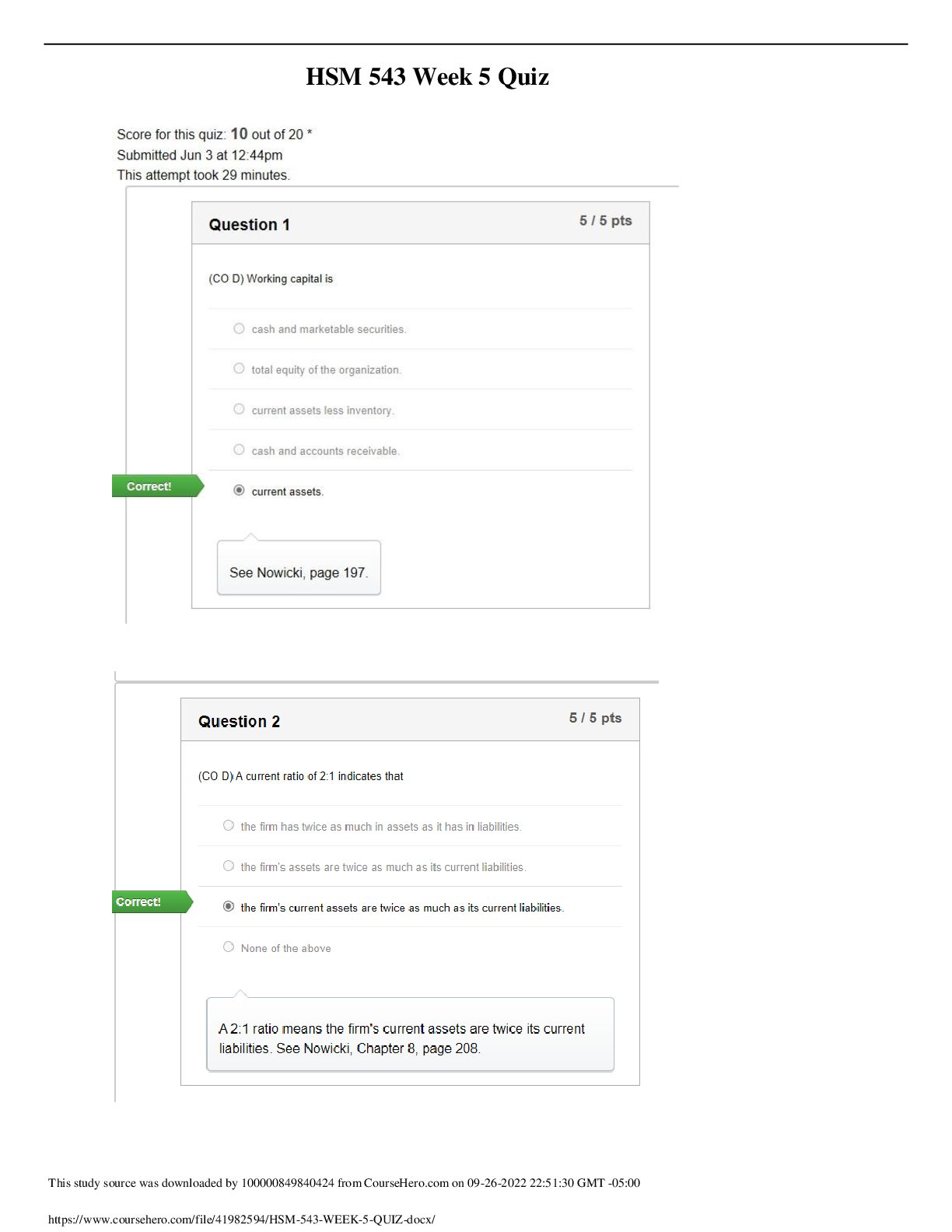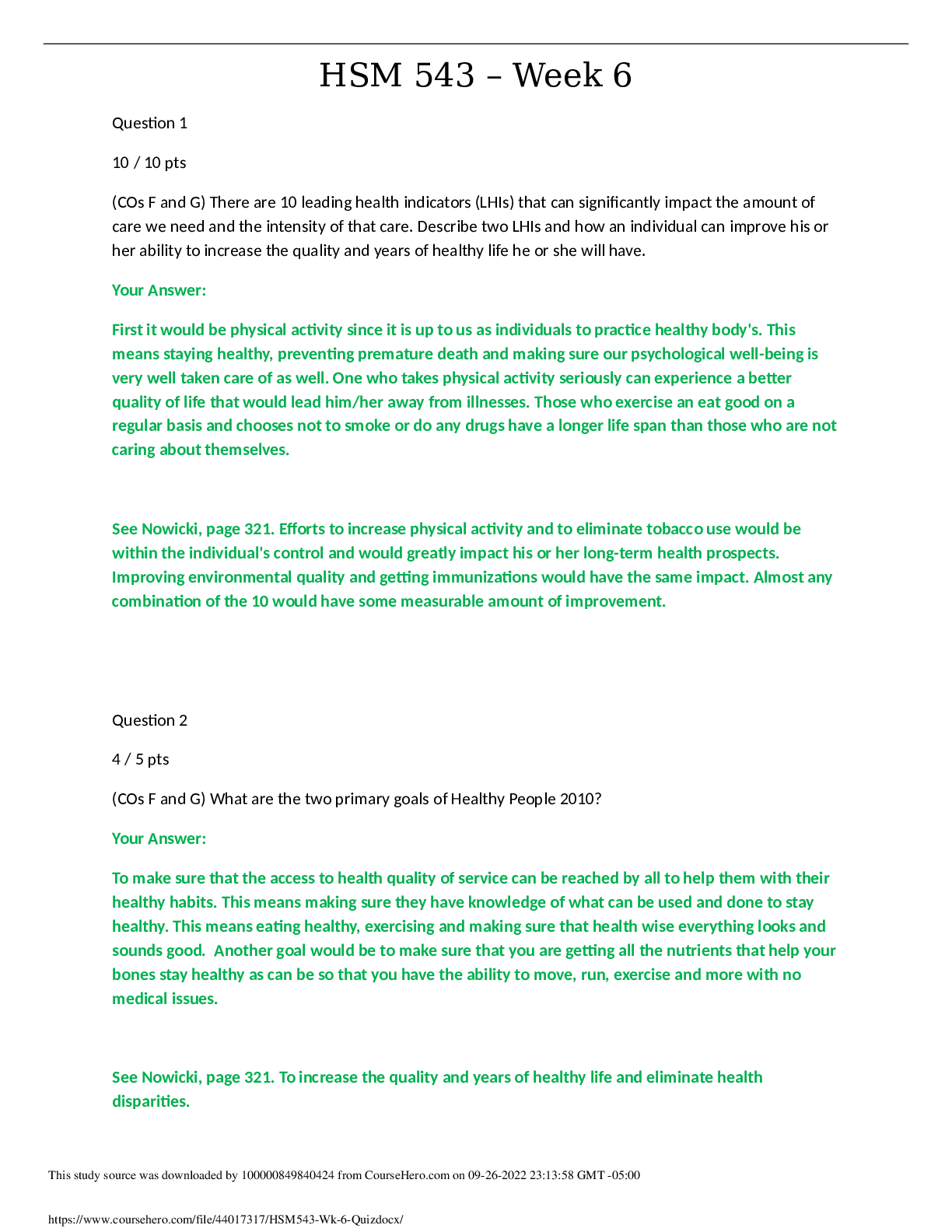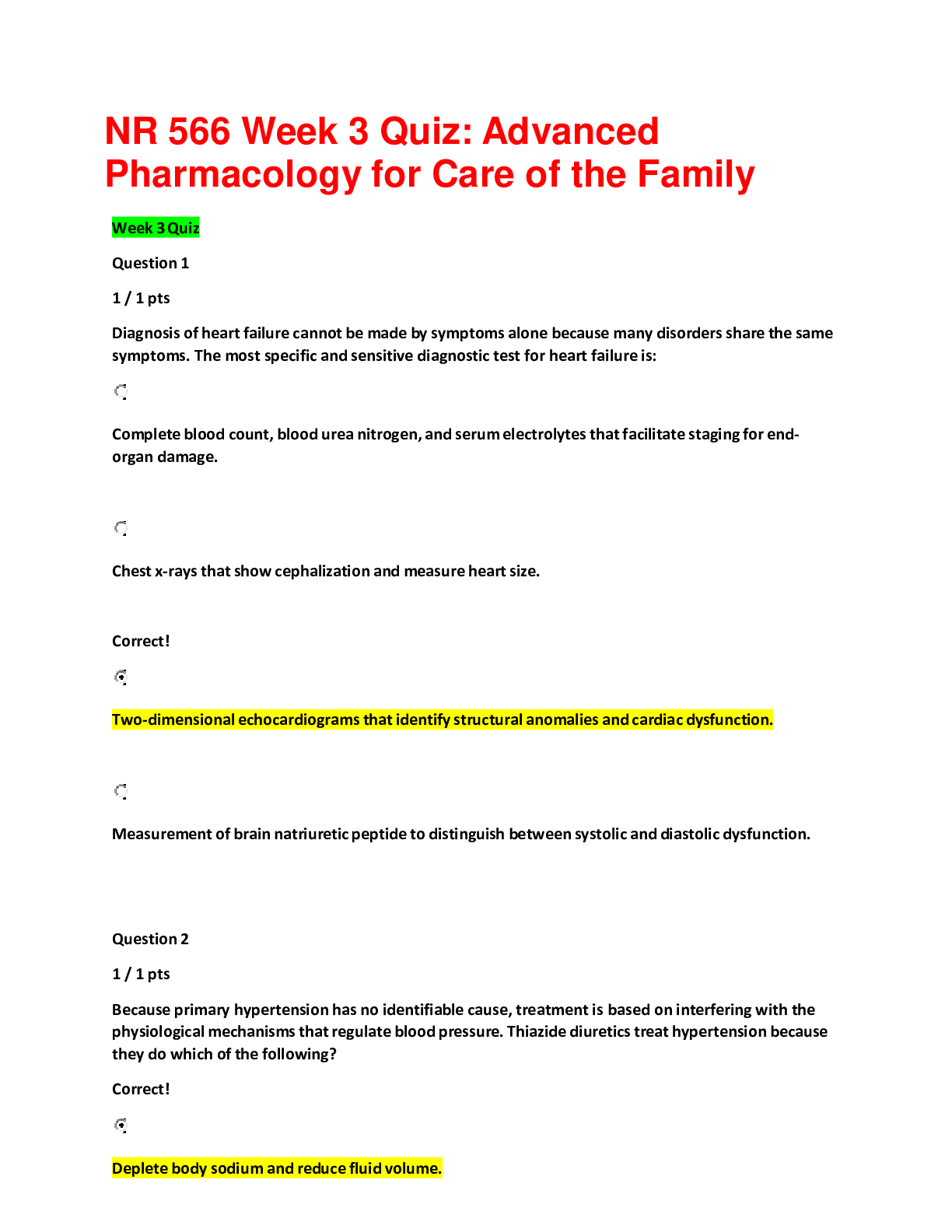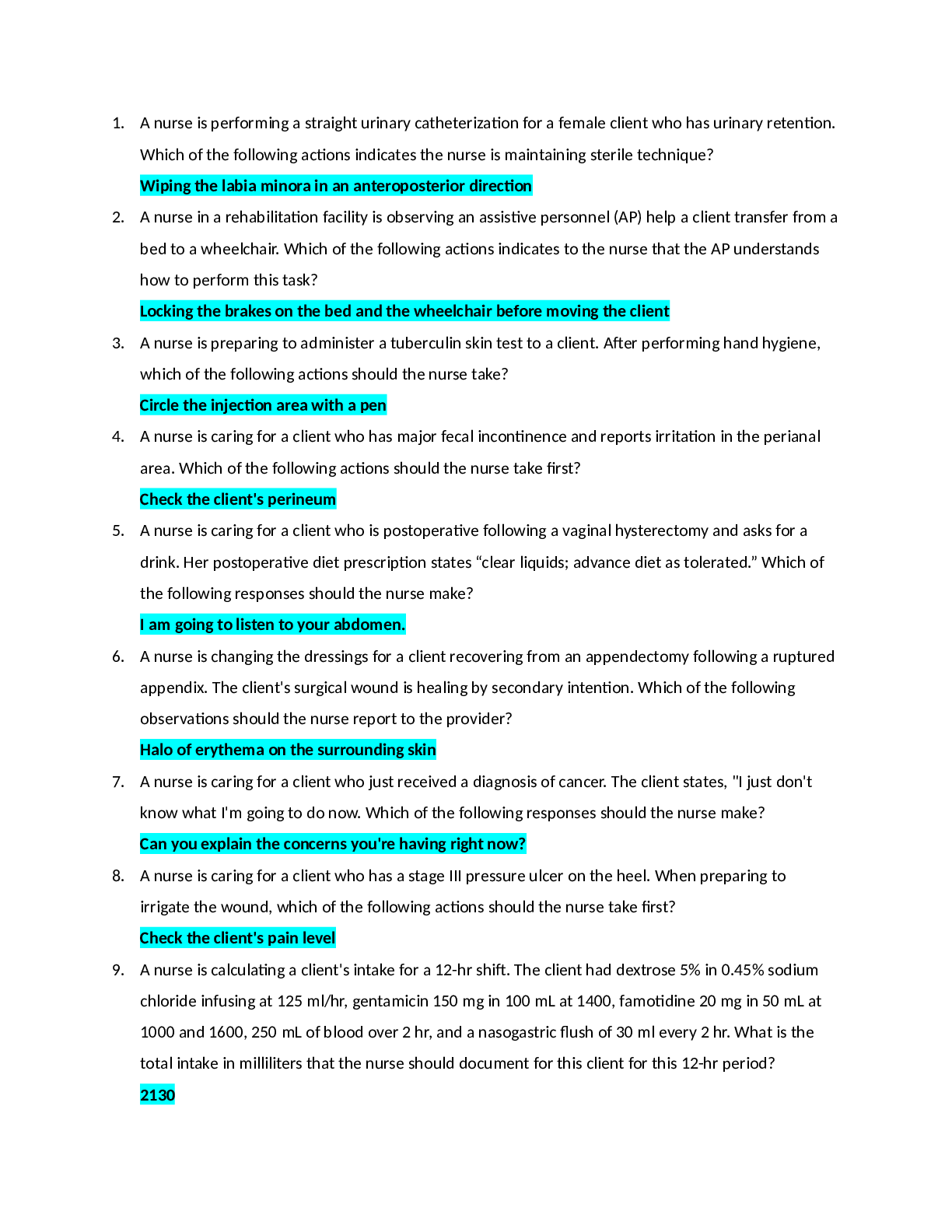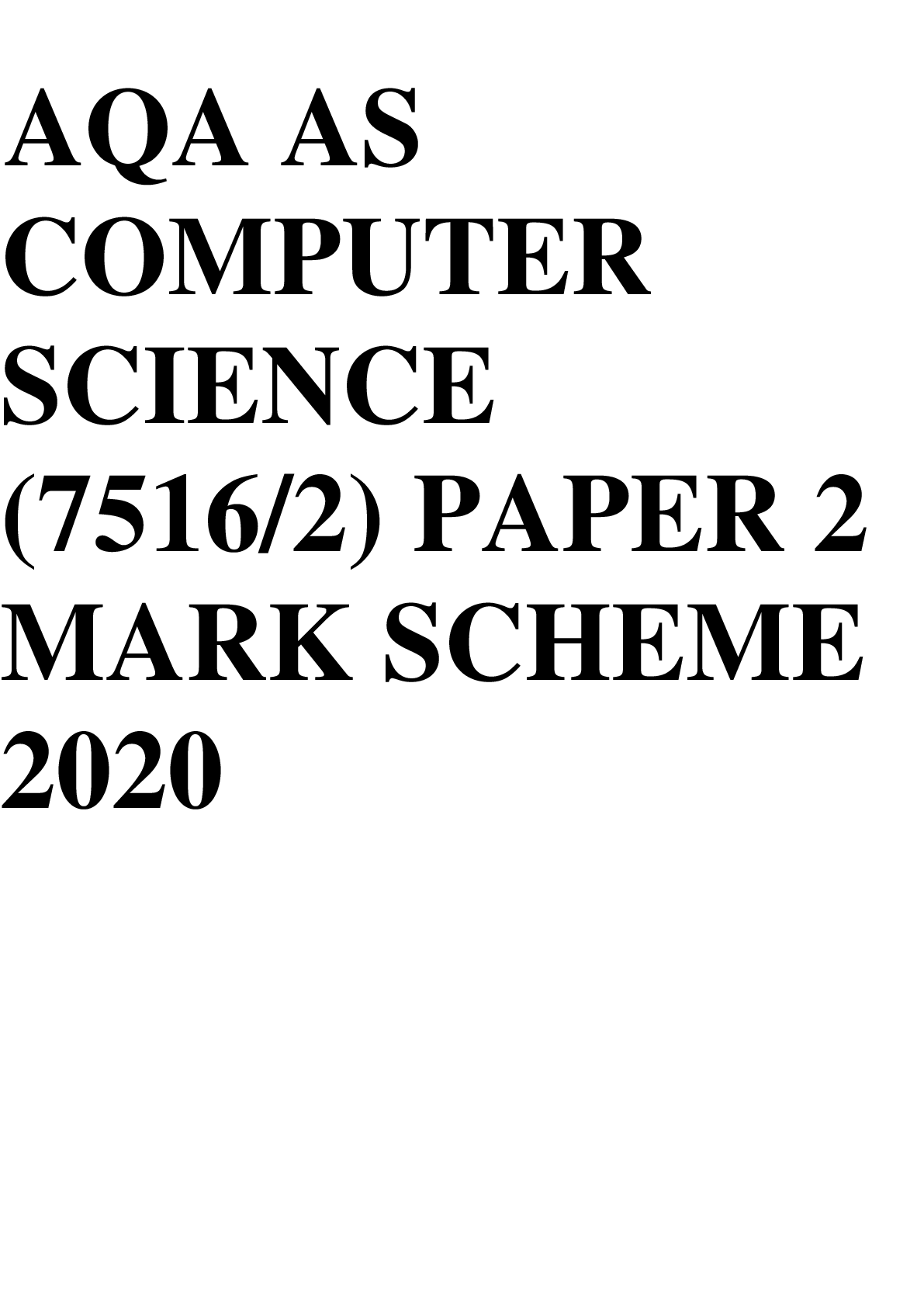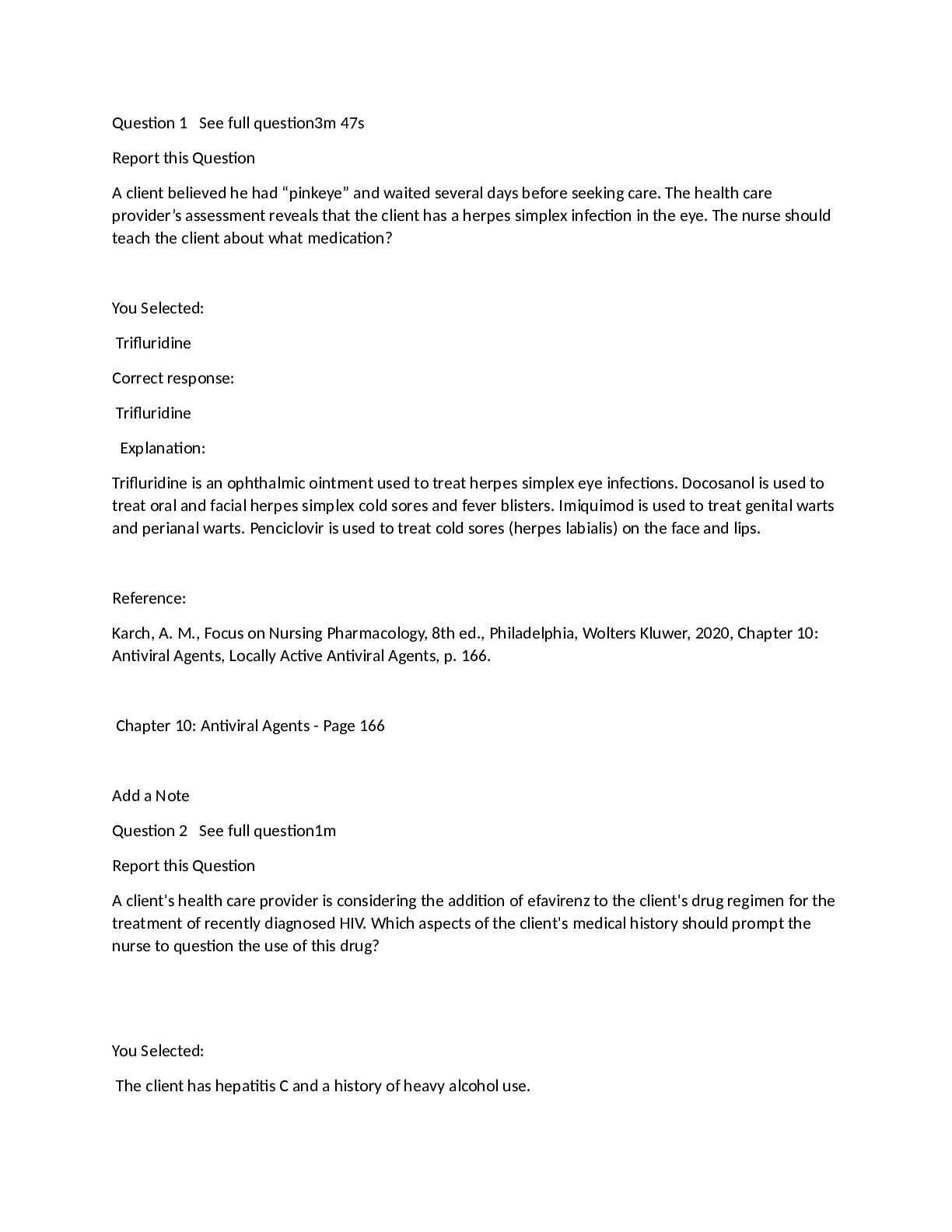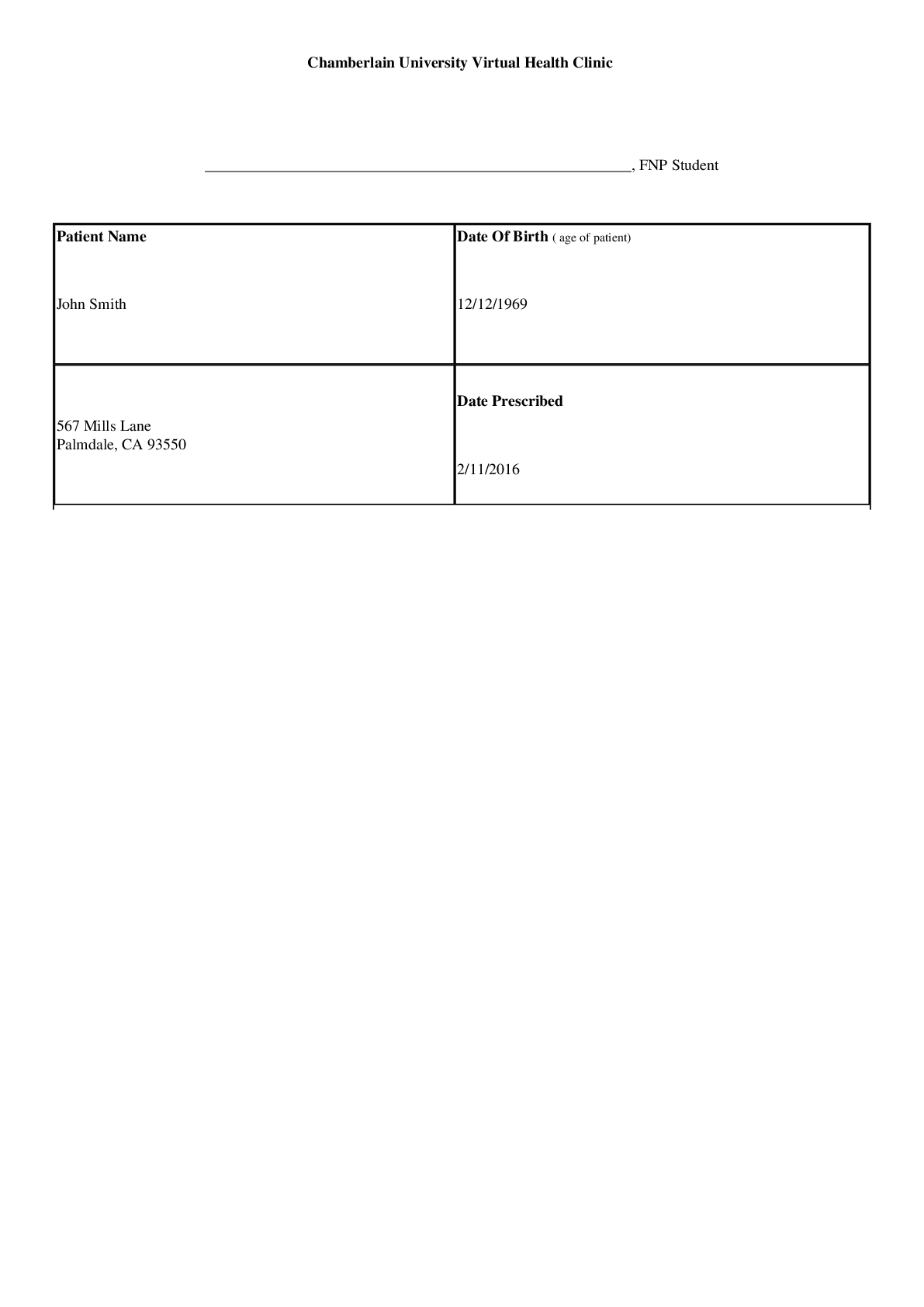*NURSING > EXAM > Principles of Pharmacology Test 3 (Grade A) Correct Study Guide, Complete Solutions | Download To Sc (All)
Principles of Pharmacology Test 3 (Grade A) Correct Study Guide, Complete Solutions | Download To Score An A
Document Content and Description Below
Chapter 50- Introduction to the Renal System 1. The nursing instructor is talking with students about the renal system. What would the instructor tell the students about the renal system, especially h... ow it helps maintain calcium levels in the body by regulating the activation of what? A) Vitamin A B) Vitamin B C) Vitamin C D) Vitamin D D Feedback: The renal system has four major functions in the body. One is regulating vitamin D activation, which helps maintain and regulate calcium levels. Vitamins A, B, and C are not associated with this function. 2. The patient has just been diagnosed with acute renal failure. The patient asks the nurse what part of his or her kidneys is involved. What would the nurse reply? A) Glomerulus B) Renal pelves C) Nephron D) Renal capsule C Feedback: The functional unit of the kidney is the nephron. There are about 2.4 million nephrons in an adult. These structures filter fluid and make urine. The glomerulus is a tuft of blood vessels with a capillary-like endothelium that allows easy passage of fluid and waste products. The renal pelves are in a region of the kidney that drains urine into the ureters. The renal capsule is a protective layer, which is made up of the fiber layer, a perirenal or brown fat layer, and the renal parietal layer. 4. The anatomy class is learning about the countercurrent mechanism in the medullary nephrons. What would the students learn about this mechanism and what it acts to do? A) Promote sodium excretion B) Concentrate or dilute the urine C) Block the effects of aldosterone D) Stimulate antidiuretic hormone (ADH) release B Feedback: The countercurrent mechanism in the medullary nephrons acts to concentrate or dilute urine. It does not promote sodium excretion nor does it block the effects of aldosterone. This mechanism does not stimulate ADH release. 5. The physiology instructor explains that the nephrons are fragile and require a constant supply of blood and oxygen. What compensatory mechanisms work to maintain this supply? A) The renin–angiotensin system, causing vasoconstriction B) Baroreceptor monitoring of the renal artery C) Increased sweating when total water volume becomes too great D) Antidiuretic hormone (ADH) release in response to increased blood volume or decreased osmolarity A Feedback: The renin–angiotensin system causes vasoconstriction to improve blood flow to the fragile nephrons. Baroreceptors are not found in the renal artery. Increased sweating is not a reflex reaction to increased total body water. ADH is released in response to decreased blood volume and increased osmolarity. [Show More]
Last updated: 1 year ago
Preview 1 out of 62 pages
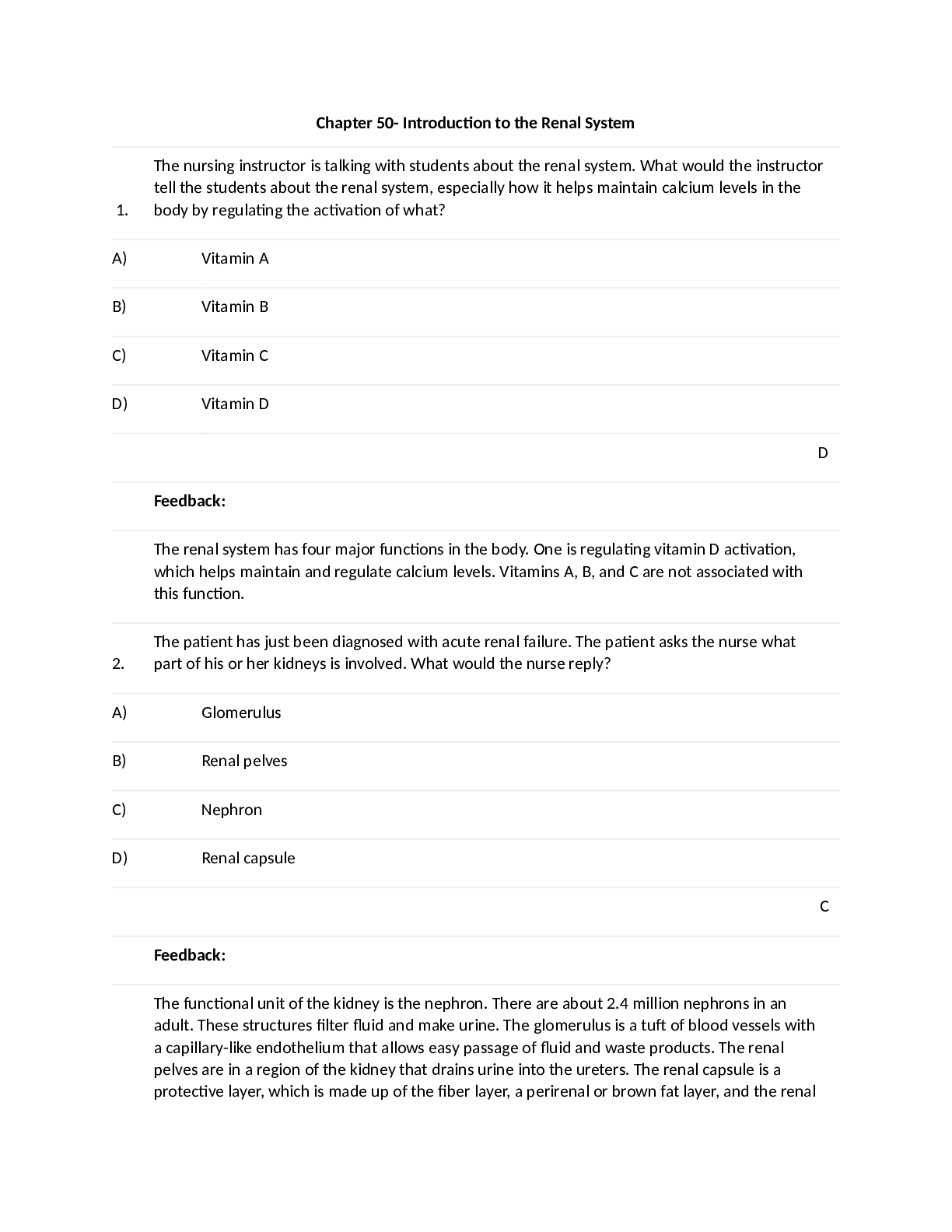
Also available in bundle (1)
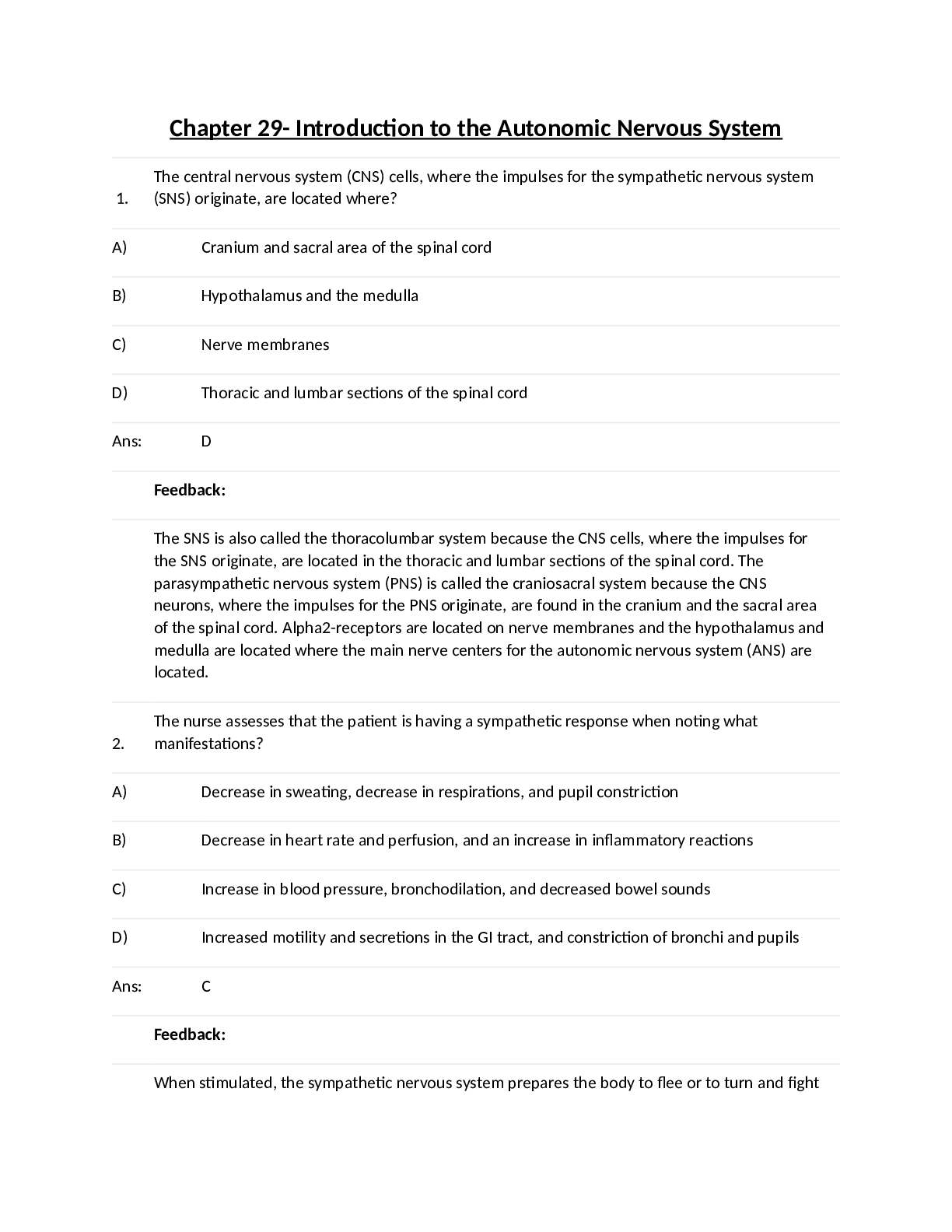
Principles of Pharmacology Test 1, 2 and 3 BUNDLE | {Complete Solutions}
Principles of Pharmacology Test 1, 2 and 3 BUNDLE | {Complete Solutions}
By A+ Solutions 2 years ago
$12.5
3
Reviews( 0 )
Document information
Connected school, study & course
About the document
Uploaded On
Jun 20, 2021
Number of pages
62
Written in
Additional information
This document has been written for:
Uploaded
Jun 20, 2021
Downloads
0
Views
50



.png)










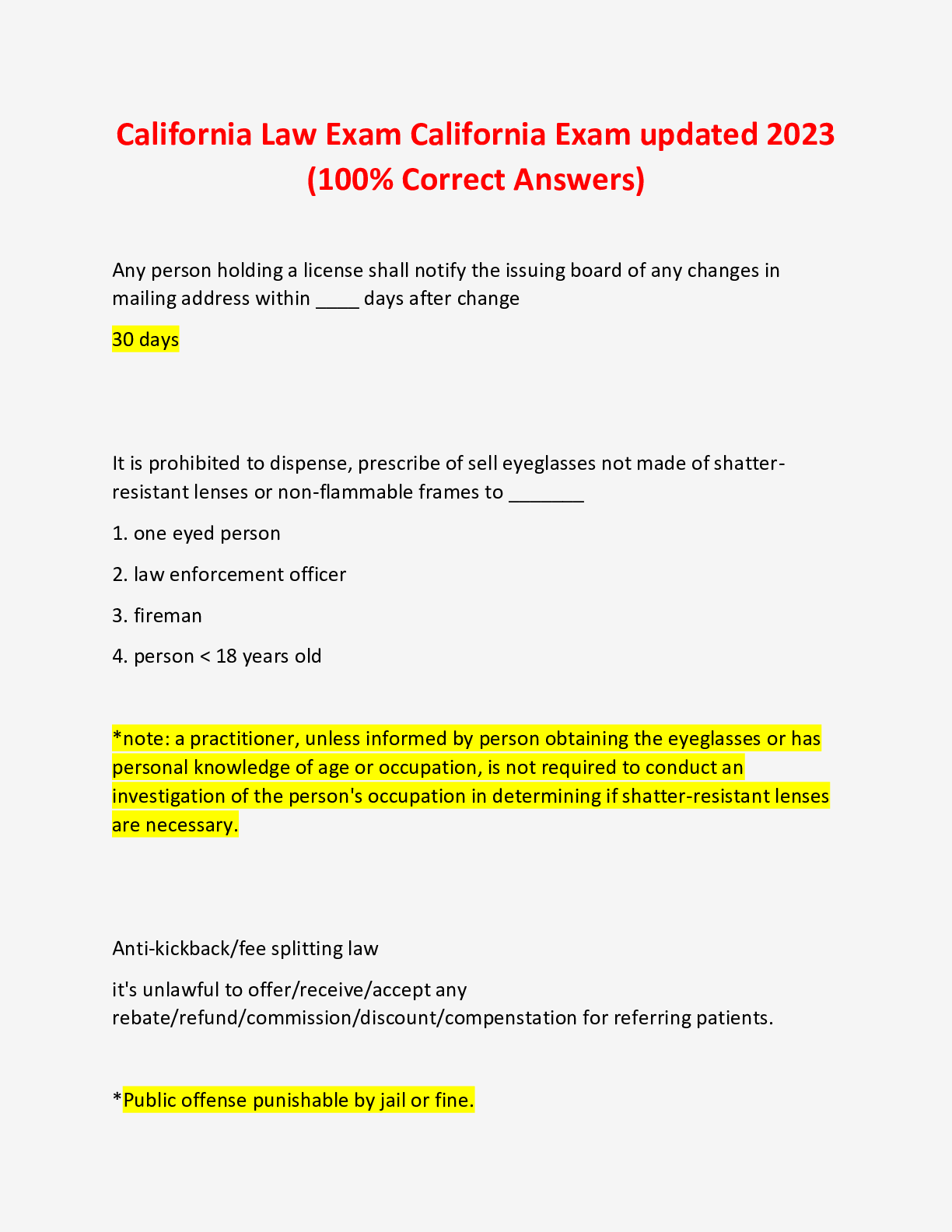




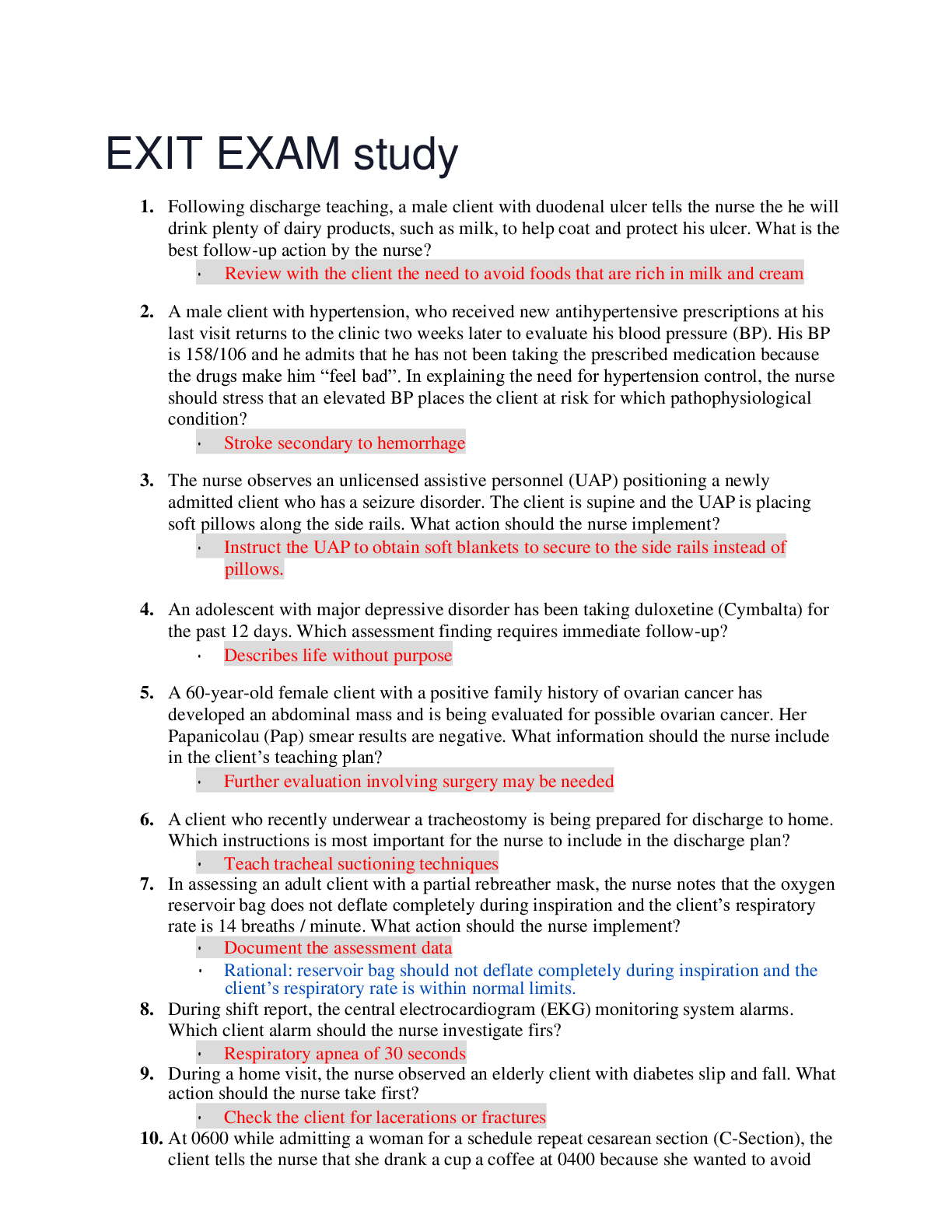
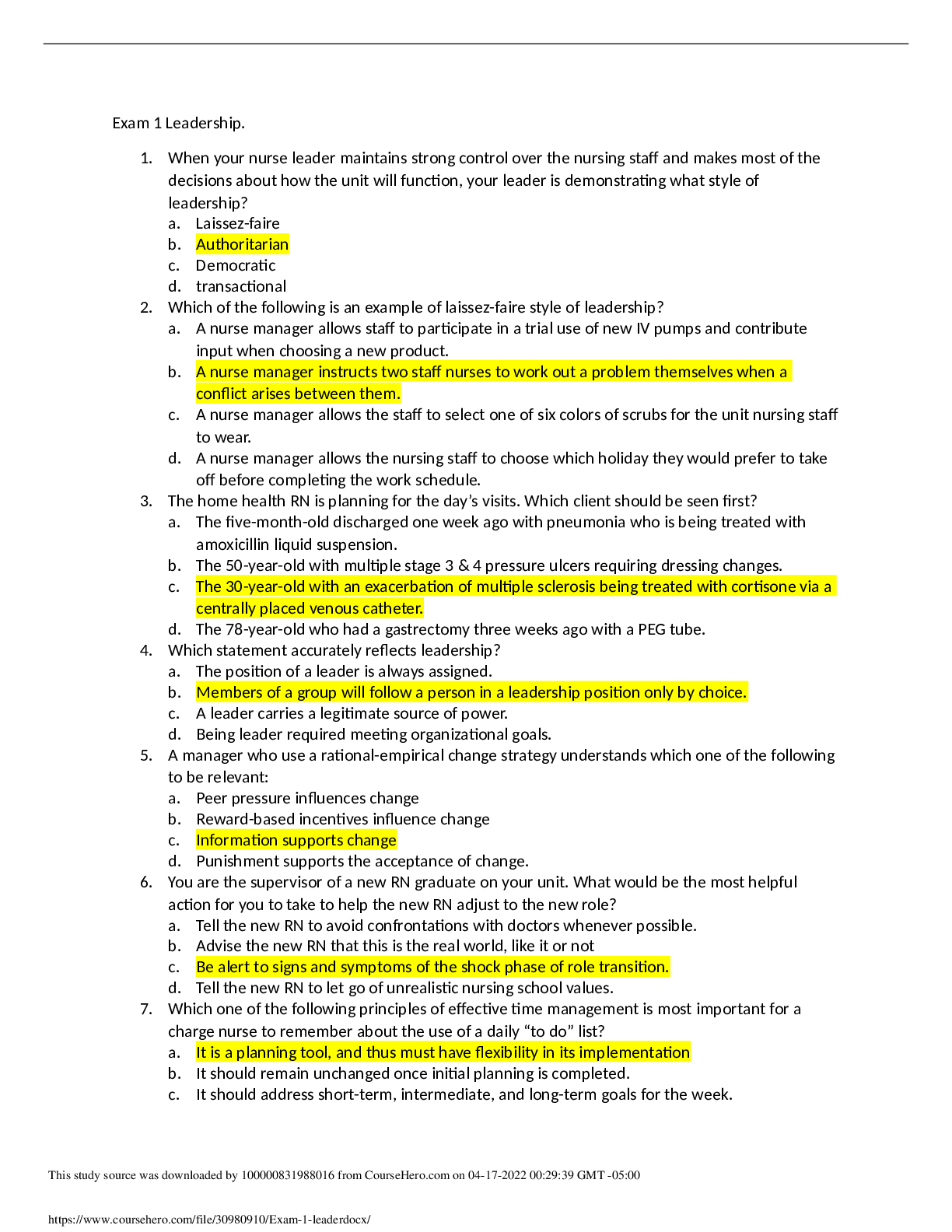
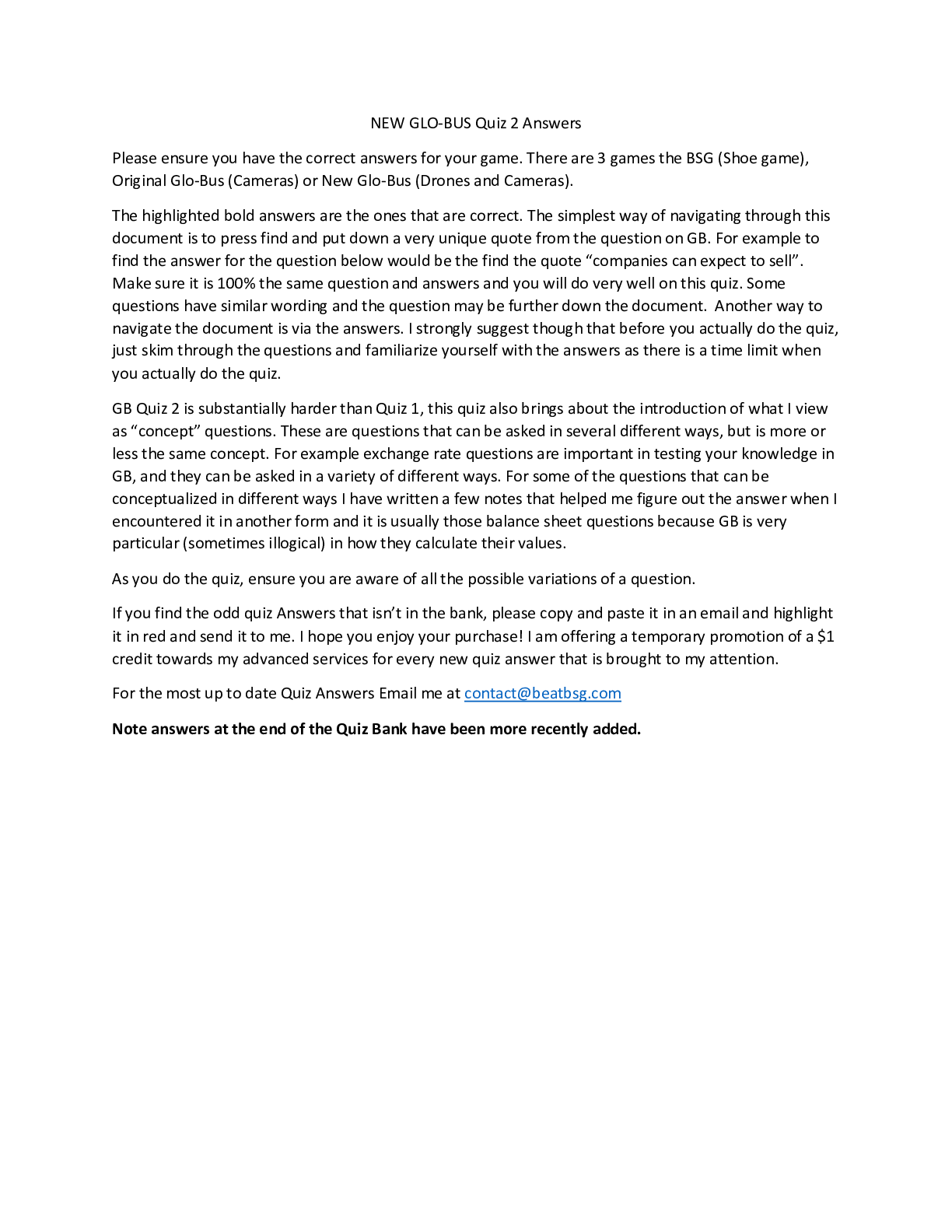
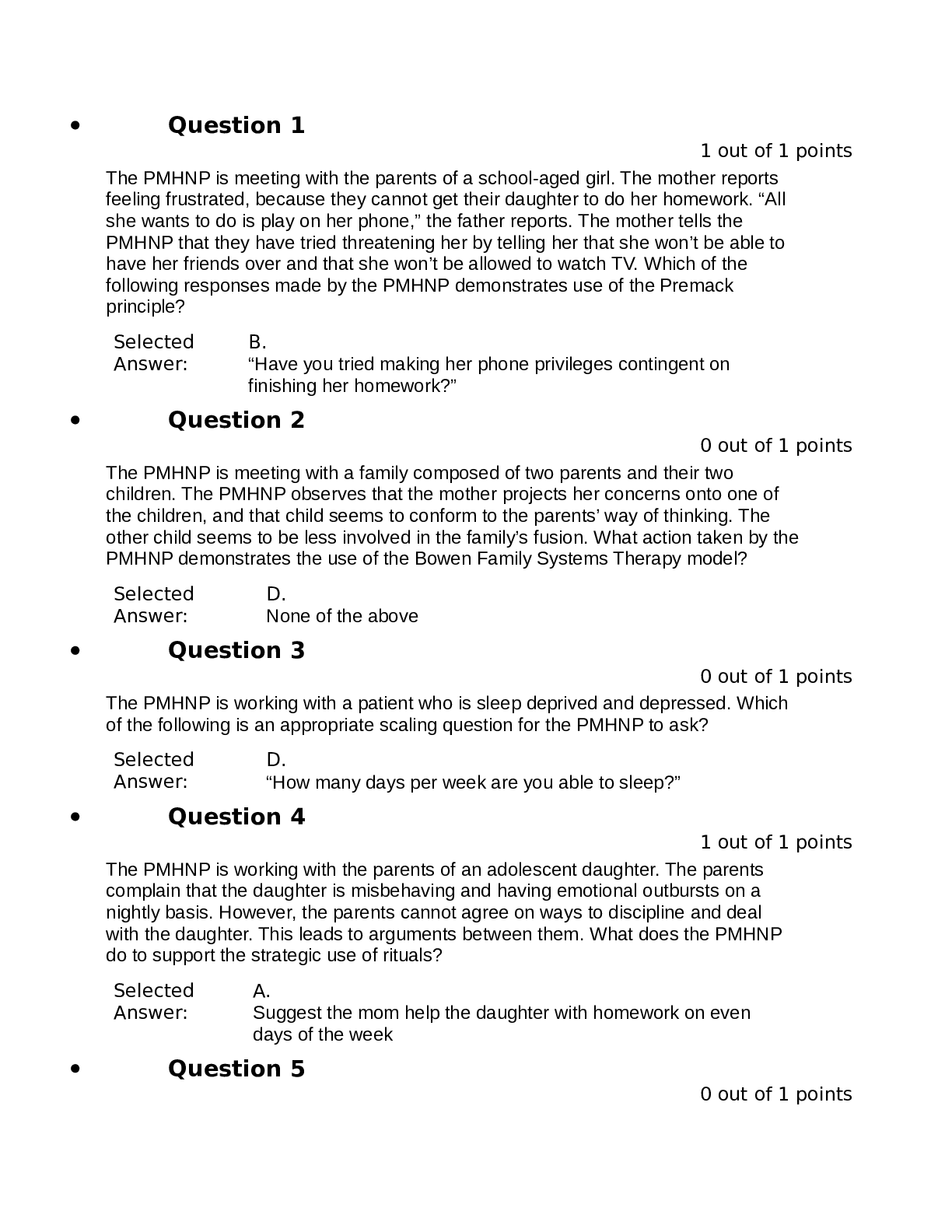
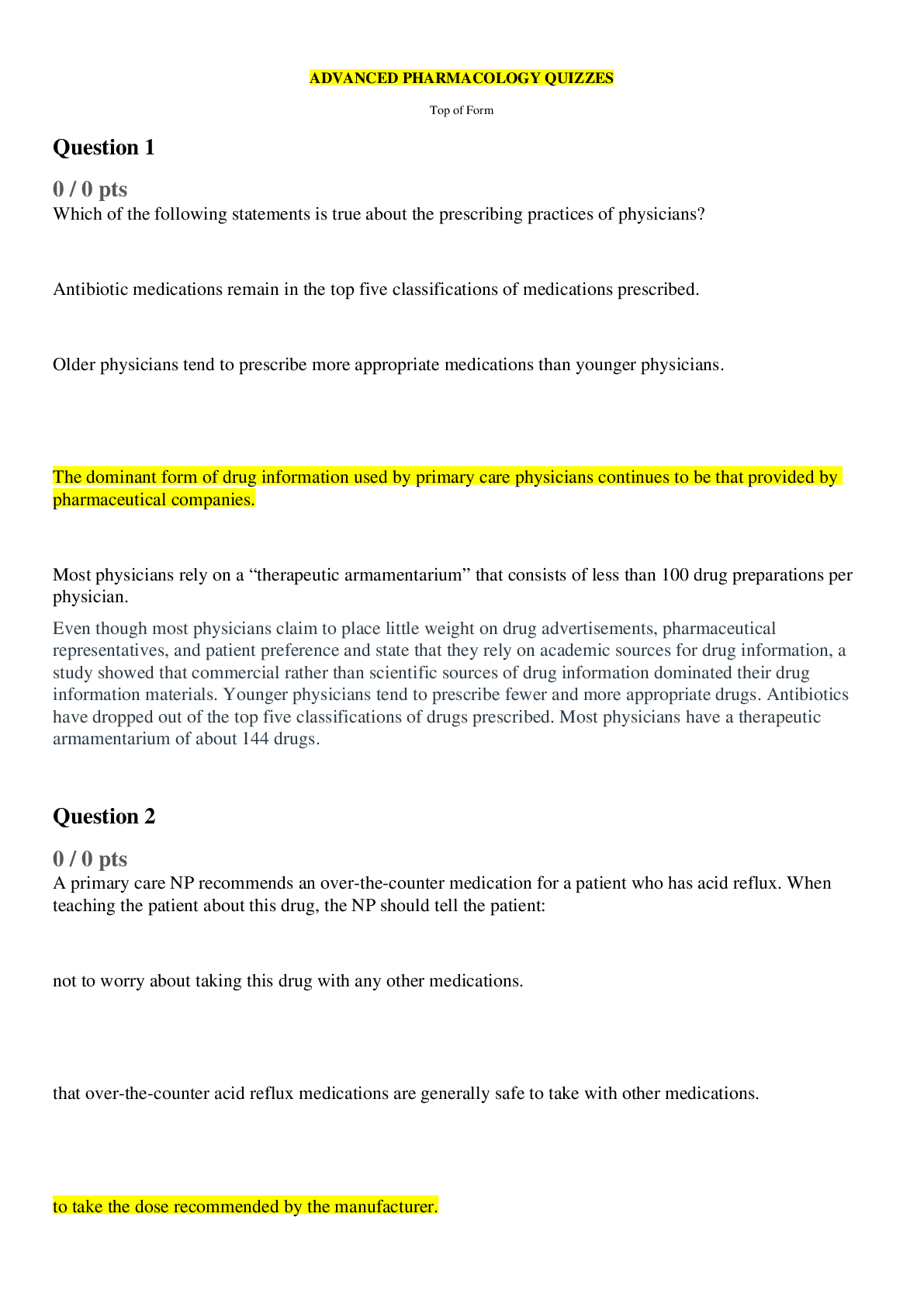

.png)
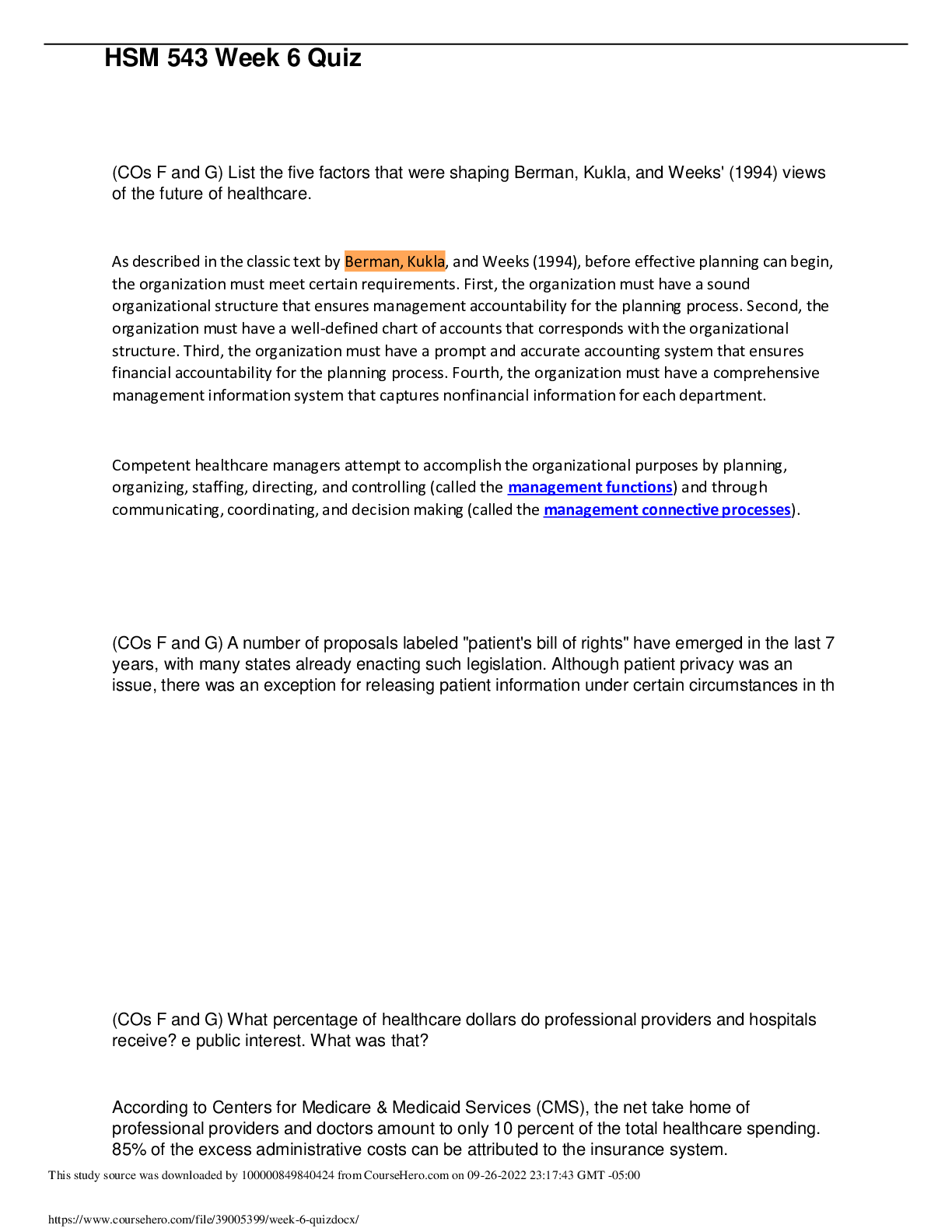
 (1).png)
